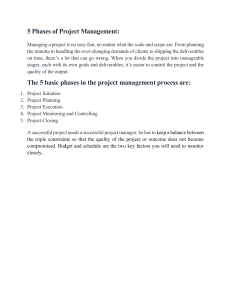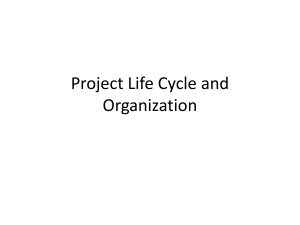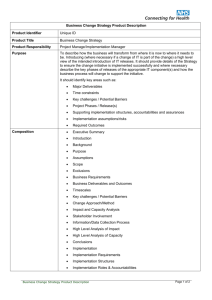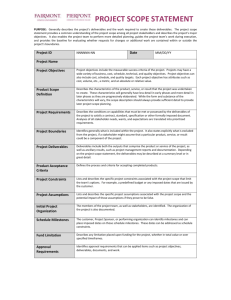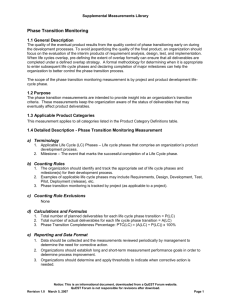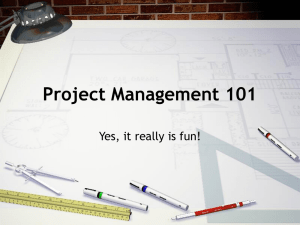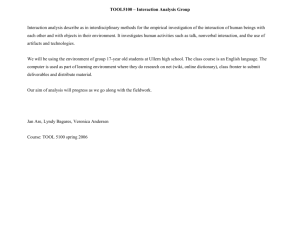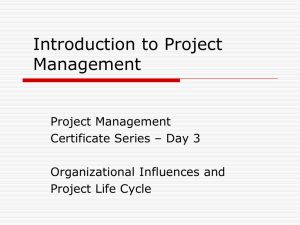File - Syed ShahRukh Haider
advertisement
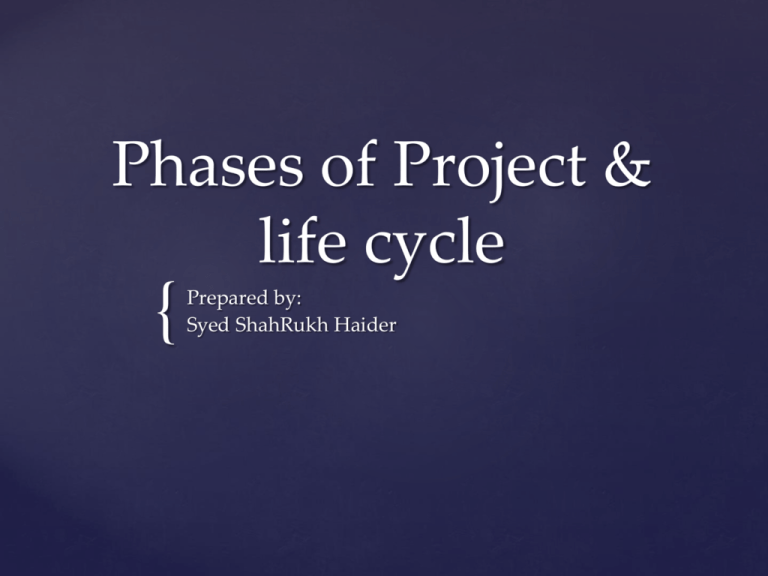
Phases of Project &
life cycle
{
Prepared by:
Syed ShahRukh Haider
Project Management Life Cycle
Project Management Life Cycle comprises four phases...
Initiation: involves starting up the project, by documenting a
business case, feasibility study, terms of reference, appointing the
team and setting up a Project Office.
Planning: involves setting out the roadmap for the project by
creating the following plans: project plan, resource plan, financial
plan, quality plan, acceptance plan and communications plan.
Execution: involves building the deliverables and controlling the
project delivery, scope, costs, quality, risks and issues.
Closure: involves winding-down the project by releasing staff,
handing over deliverables to the customer and completing a post
implementation review
THE FOUR PHASES OF A PROJECT
Project Initiation
It is the first phase in the Project Life Cycle and essentially involves
starting up the project. You initiate a project by defining its purpose
and scope, the justification for initiating it and the solution to be
implemented. You will also need to recruit a suitably skilled project
team, set up a Project Office and perform an end of Phase Review.
The Project Initiation phase involves the following six key steps:
Project Planning
After defining the project and appointing the project team, you're
ready to enter the detailed Project Planning phase. This involves
creating a suite of planning documents to help guide the team
throughout the project delivery. The Planning Phase involves
completing the following 10 key steps:
Project Execution
With a clear definition of the project and a
suite of detailed project plans, you are now
ready to enter the Execution phase of the
project.
This is the phase in which the deliverables are
physically built and presented to the customer
for acceptance.
While each deliverable is being constructed, a
suite of management processes are undertaken
to monitor and control the deliverables being
output by the project.
These processes include managing time, cost,
quality, change, risks, issues, suppliers,
customers and communication.
Once all the deliverables have been produced
and the customer has accepted the final
solution, the project is ready for closure.
Project Closure
It involves releasing the final deliverables to the
customer, handing over project documentation to
the business, terminating supplier contracts,
releasing project resources and communicating
project closure to all stakeholders. The last
remaining step is to undertake a Post
Implementation Review to identify the level of
project success and note any lessons learned for
future projects.
Initiation
Planning
Execution
Close Out
Project Phases
Process flow chart of project phases
